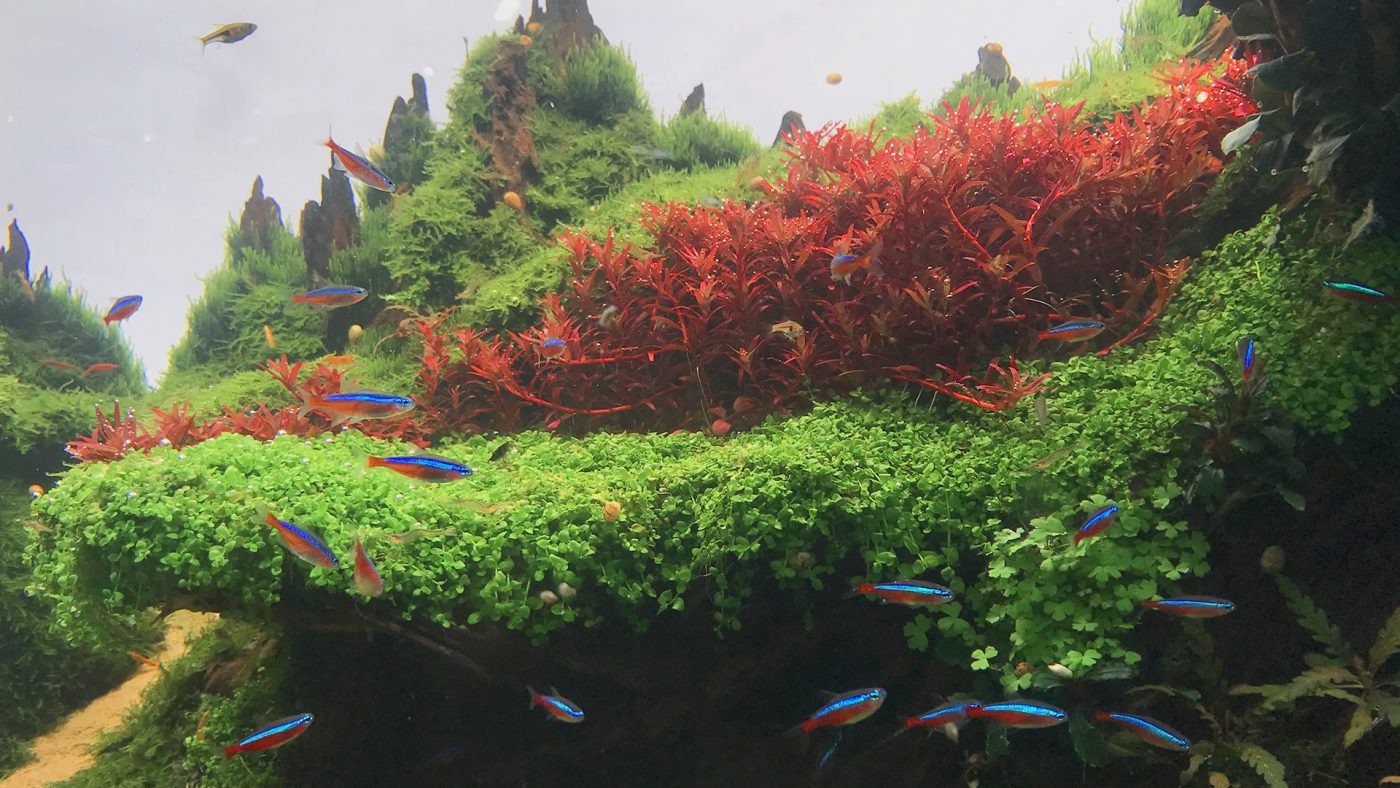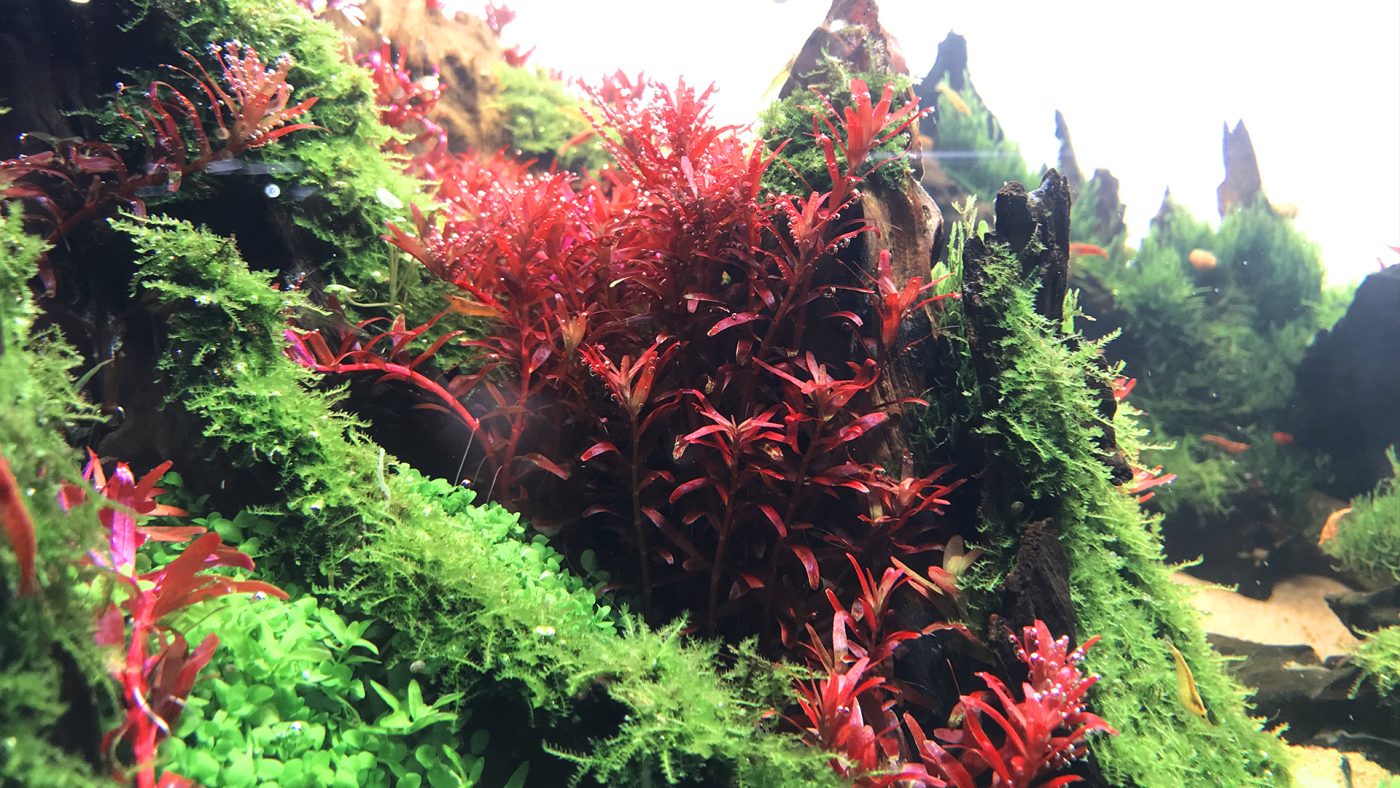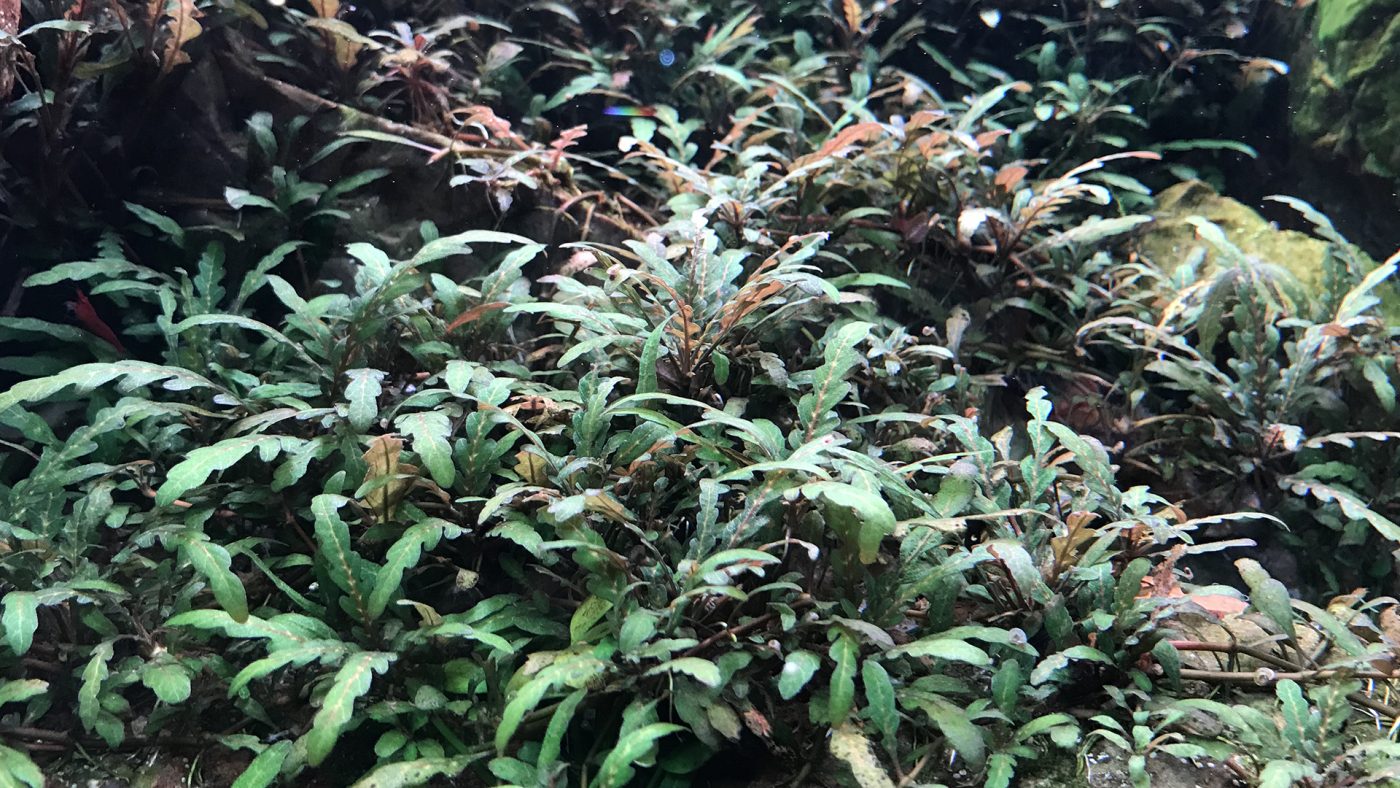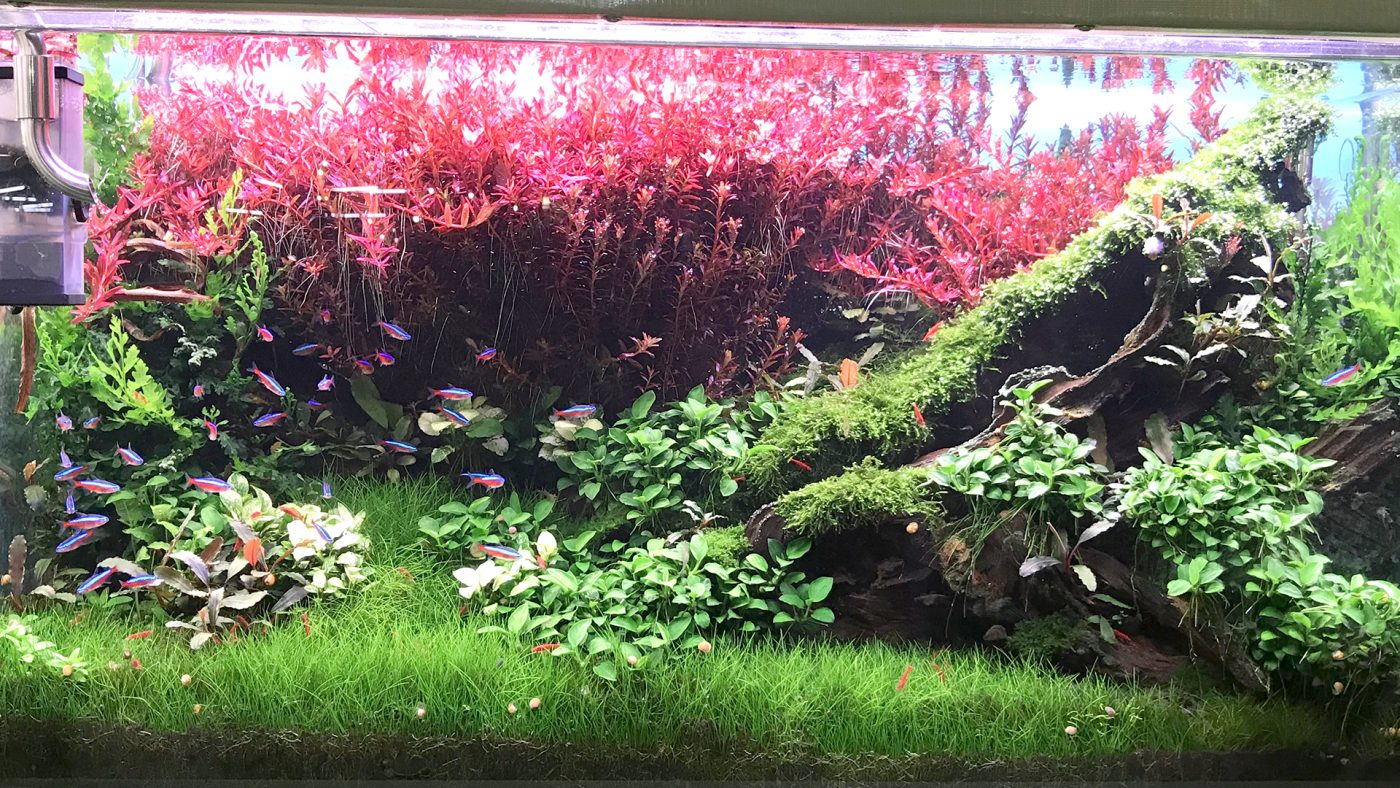Blogs
Caring for aquatic plants: tips and tricks for a thriving tank
Aquatic plants are pivotal in creating a harmonious and balanced aquarium ecosystem. They offer numerous benefits that contribute to the overall health and aesthetics of your underwater haven. One of the primary functions of aquatic plants is oxygenating the water through the process of photosynthesis. During this process, plants absorb sunlight and carbon dioxide (CO2) to produce oxygen, which is essential for the fish and other aquatic life in the tank.
Moreover, these plants serve as natural filters by absorbing excess nutrients from the water, which helps to prevent the proliferation of algae. Algae can be detrimental to your tank as it can cause water quality issues and obscure the beauty of your setup. Aquatic plants also provide shelter and hiding places for fish and invertebrates, making the tank environment more natural and stress-free for its inhabitants.
Adding to their functional benefits, aquatic plants enhance the visual appeal of your tank. A well-planted aquarium can mimic the appearance of a natural underwater landscape, complete with lush greenery and intricate textures. Transitioning from a barren tank to one filled with thriving plants can be compared to transforming a dull room into a vibrant, inviting garden.
Types of Aquatic Plants
To cater to various setups and preferences, aquatic plants are categorized into different types. This classification helps in selecting the right plants based on the specific needs and conditions of your aquarium.
- Floating Plants: Examples include Water Lettuce and Duckweed. These plants float on the water surface, providing shade and reducing light penetration, which can help in controlling algae growth. They also offer protective cover for shy fish species.
- Stem Plants: Hornwort and Rotala are classic examples. They grow upright with long stems and are suitable for creating a dense, jungle-like atmosphere in the aquarium. Stem plants are great for oxygenating the water and removing excess nutrients.
- Rosette Plants: Including Amazon Sword and Anubias. These have a rosette growth pattern with leaves radiating from a central base. They are perfect as focal points in the tank, offering a contrast in texture and appearance when compared to other plant types.
- Carpeting Plants: Dwarf Baby Tears and Monte Carlo are popular choices. These low-growing plants form dense, carpet-like coverings on the substrate, creating a grassy floor effect that is highly sought after in aquascaping.
Choosing the Right Plants for Your Tank

Selecting the right aquatic plants involves several considerations to ensure they thrive in your tank conditions. Here are some key tips to guide you:
- Tank Size: Match the size of your tank with the growth habits of the plants. Large species like Amazon Swords are suitable for bigger tanks, whereas smaller plants like Java Moss fit well in nano or small aquariums.
- Lighting Conditions: Identify your tank’s lighting setup. For low-light conditions, hardy plants like Anubias and Java Fern that require minimal light will do well. For high-light conditions, you can opt for more demanding species such as Dwarf Baby Tears that thrive under strong illumination and CO2 supplementation.
- Water Parameters: Different plants have varied requirements regarding water parameters like pH, hardness, and temperature. Research the needs of each plant species and ensure they align with the existing conditions in your tank. For instance, Cryptocoryne species are tolerant of a wide range of parameters, making them versatile choices.
Understanding these basics and selecting the right plants will set a solid foundation for a thriving aquatic ecosystem in your aquarium.
Essential Tank Setup for Plant Growth
Lighting: The Foundation of Plant Growth
Proper lighting is the cornerstone of a successful planted aquarium. Just as sunlight is crucial for terrestrial plants, the right aquarium lighting is essential to fuel photosynthesis in aquatic plants. The amount and quality of light you provide directly impact the plant’s health, growth rate, and overall appearance.
Lighting Duration and Intensity: Generally, plants require about 8-10 hours of light per day. This can be achieved using a combination of natural and artificial lighting. However, the intensity of light varies based on plant species:
- Low-light tanks: Suitable for hardy plants like Java Moss and Anubias that can thrive under minimal lighting.
- High-light tanks: Ideal for plants such as Water Sprite and Rotala that require strong illumination and often additional CO2 to support their vigorous growth.
Types of Lighting: There are various lighting options available, each with its benefits:
- LED Lights: Energy-efficient and customizable, LED lights are popular for their ability to provide the right spectrum and intensity needed for plant growth.
- Fluorescent Lights: T5 or T8 fluorescent bulbs are effective and affordable options for providing uniform light across the aquarium. However, they may require replacement more frequently than LED lights.
- Metal Halide Lights: These are high-intensity lights suitable for larger, deep tanks. They provide ample light penetration but can be expensive and generate more heat.
Table: Comparison of Different Lighting Types
| Lighting Type | Pros | Cons | Average Cost (VND) |
|---|---|---|---|
| LED Lights | Energy-efficient, customizable, long life | Higher initial cost | 2,000,000-5,000,000 |
| Fluorescent | Affordable, good light spread | Requires frequent bulb replacement | 500,000-1,500,000 |
| Metal Halide | High intensity, suitable for deep tanks | Expensive, generates heat | 3,500,000-7,000,000 |
Substrate: Providing Nutrients and Anchoring
The substrate is not just a decorative element but a critical component in a planted aquarium. It provides essential nutrients to the plant roots and acts as an anchoring medium.
Types of Substrate:
- Nutrient-Rich Substrates: These substrates, such as aqua soil, contain organic matter, volcanic ash, and minerals that slowly release nutrients into the water column, ensuring a steady supply for the plants.
- Inert Substrates: Gravel and sand are common examples. While they do provide physical support, they lack nutrients. Supplementing these with root tabs can help deliver essential nutrients to the plant roots.
Choosing the Right Substrate:
- For high-demand plants, nutrient-rich substrates are ideal as they provide a consistent nutrient source.
- For low-demand plants, an inert substrate supplemented with root tabs can suffice.
- Consider the grain size of the substrate; finer grains can compact over time, potentially suffocating plant roots, while larger grains ensure better water circulation but may lack stability.
Filtration: Maintaining Water Quality
A good filtration system is pivotal in maintaining water quality, essential for both fish and plant health. It removes debris, excess nutrients, and waste, thus preventing the build-up of harmful substances like ammonia and nitrite.
Types of Filtration:
- Mechanical Filtration: Traps particulate matter and debris, ensuring the water remains clear.
- Biological Filtration: Involves beneficial bacteria that convert harmful ammonia and nitrites into less toxic nitrates. This is crucial as plants can utilize nitrates as a nutrient source.
- Chemical Filtration: Uses activated carbon or other media to remove dissolved compounds, medications, and heavy metals.
An efficient filtration system often combines more than one type to ensure comprehensive water treatment. For planted tanks, maintaining moderate water flow is crucial. Excessive current can uproot plants, while stagnant water can lead to poor oxygenation and nutrient distribution.
CO2 Injection: Boosting Plant Growth
Adding CO2 to your aquarium can significantly enhance plant growth, especially for species requiring high light. Here’s how to set it up effectively:
Required Equipment:
- CO2 Regulator: Controls the CO2 flow from the tank to the diffuser.
- Diffuser: Breaks CO2 into fine bubbles, ensuring better absorption by plants.
- Bubble Counter: Monitors CO2 injection rate.
- Drop Checker: Measures dissolved CO2 levels in the tank.
Setting Up CO2:
- Initial Setup: Start with a lower injection rate, monitoring plant response and fish behavior. Gradually increase CO2 levels until optimal growth is observed.
- Safety: Excessive CO2 can harm fish, so monitor the tank closely, ensuring CO2 does not exceed safe levels.
By understanding these fundamental aspects of aquarium setup—lighting, substrate, filtration, and CO2—you lay the groundwork for a thriving aquatic environment.
Caring for Your Aquatic Plants

Regular Maintenance: Keeping Your Tank Clean
Maintaining a clean and healthy aquarium environment is akin to regular upkeep of a garden. Just like a neglected garden can become overrun with weeds and pests, an unmaintained tank can face numerous challenges ranging from algae outbreaks to plant deterioration.
Water Changes: Regular water changes are crucial. Aim for a 25-30% water change bi-weekly to remove accumulated waste and replenish vital nutrients. This practice also helps in maintaining stable water parameters, which is essential for plant health.
Cleaning: Clean the aquarium glass to prevent the buildup of algae, which can obstruct light and harm plant growth. Gently scrub decorations and equipment, being careful not to disrupt the beneficial bacteria colonies on them.
Equipment Check: Regularly inspect and maintain filtration and Co2 systems to ensure they are functioning optimally. Clean filters and replace media as required to avoid clogging and ensure effective water filtration.
Trimming and Pruning: Promoting Healthy Growth
Just as gardeners prune plants to promote healthy growth, trimming aquatic plants is essential in an aquarium setting. Regular trimming helps manage the plant’s shape, prevents overcrowding, and encourages new growth.
Trimming Techniques:
- Stem Plants: Cut above a leaf node to promote bushier growth. Trim every 2-3 weeks to maintain shape and prevent overshadowing of low-lying plants.
- Rosette Plants: Remove damaged or dying leaves to prevent nutrient depletion. Trim older leaves to encourage fresh growth.
- Carpeting Plants: Use small scissors to trim the top growth, ensuring a uniform carpet effect.
Fertilization: Supplying Essential Nutrients
Aquatic plants, like terrestrial ones, require nutrients to thrive. While the substrate and fish waste provide some nutrients, additional fertilization can help meet the demands of fast-growing plants.
Types of Fertilizers:
- Liquid Fertilizers: These are added directly to the water column and are readily absorbed by the plant leaves. They often contain essential micro and macronutrients.
- Root Tabs: Placed directly into the substrate, these provide a concentrated source of nutrients for root-feeding plants.
- DIY Fertilizers: For those looking to customize nutrient dosing, creating DIY fertilizers using raw chemicals like potassium nitrate (KNO3) and potassium phosphate (KH2PO4) can be beneficial.
Fertilization Schedule: Follow a regular dosing schedule to ensure consistent nutrient availability. Overdosing can lead to algae outbreaks while underdosing can cause nutrient deficiencies.
Controlling Algae: Maintaining Balance

Algae is an inevitable part of any aquarium, but controlling its growth is crucial for the health and aesthetics of your aquascape. Algae competes with plants for nutrients and light, and an outbreak can quickly turn your pristine tank into a murky mess.
Prevention: The best approach is prevention. Maintain a balanced nutrient load by avoiding overfeeding and promptly removing uneaten food. Ensure the proper balance of light, CO2, and nutrients suitable for plant growth but not excessive enough to promote algae.
Mechanical Removal: Regularly scrape off visible algae from glass, decorations, and plants. Use tools like algae scrapers or magnetic cleaners for this purpose.
Biological Control: Introduce algae-eating inhabitants such as Amano shrimp, Otocinclus catfish, or nerite snails. These critters help in keeping algae in check naturally.
Chemical Treatments: As a last resort, you can use anti-algae chemicals, but these should be applied with caution to avoid harming your plants and fish.
By maintaining regular maintenance routines, diligently trimming and pruning, ensuring proper fertilization, and controlling algae, your aquatic plants can thrive in a balanced and healthy environment.
Troubleshooting Common Plant Problems

Lack of Growth: Identifying the Cause
When aquatic plants show a lack of growth, it’s like a puzzle requiring patient investigation. This stagnation can be quite disheartening, especially after investing time and resources into setting up a beautiful tank. Lack of growth might be due to several factors, each necessitating a different approach.
Lighting Issues: Insufficient lighting is a common culprit. Ensure that your tank receives the appropriate duration (8-10 hours daily) and intensity of light. If plants are still not responding, consider switching to higher-quality or specialized LED lights designed for plant growth.
Nutrient Deficiencies: Plants require a balanced diet, including macronutrients like nitrogen, phosphorous, and potassium, and micronutrients like iron, magnesium, and trace elements. Lack of these nutrients can stunt growth. Regular dosing with comprehensive liquid fertilizers or root tabs can rectify this. Conduct regular water tests to check nutrient levels.
Poor Water Quality: High levels of ammonia, nitrites, or inadequate water parameters can inhibit plant growth. Conduct regular water tests and ensure that your tank adheres to the optimal pH, temperature, and hardness standards for your plant species.
Leaf Discoloration: Nutrient Deficiencies or Excess
Leaf discoloration is a red flag indicating nutrient imbalance. Understanding the specific discoloration patterns can help identify the problem:
Yellowing Leaves: This often points to nitrogen deficiency. Without adequate nitrogen, plants cannot produce the green pigment chlorophyll. Remedy this by using nitrogen-rich fertilizers.
Purplish Leaves: A lack of phosphorous typically causes this. Phosphorus is essential for energy transfer within plants. Boosting phosphorus levels with appropriate fertilizers can solve this issue.
Brown or Crispy Edges: Potassium deficiency can lead to burnt edges on the leaves. Potassium aids in water regulation and nutrient transport within plants. Use potassium-based fertilizers and ensure balanced nutrient dosing.
Excessive Nutrients: Over-fertilization can also cause discoloration due to nutrient burn or toxicity. Heavy feeding can lead to salt buildup and plant damage. Regular water changes and monitoring can help dilute excess nutrients.
Melted Plants: Sudden Environmental Changes
Sudden environmental changes can cause plants to “melt” or rapidly deteriorate, often alarming aquarists. This melting is essentially the plant’s reaction to stress.
Temperature Fluctuations: Plants are sensitive to abrupt changes in water temperature. Move plants gradually into new environments to avoid thermal shocks. Maintain a stable temperature within the plants’ preferred range.
Light Shifts: Sudden changes in lighting intensity or duration can shock plants. When introducing new plants or changing the lighting setup, gradually increase the light exposure.
Chemistry Changes: Significant variations in water chemistry, such as pH swings or introduction of new chemicals, can damage plants. Acclimate plants by slowly adjusting water parameters to match the new environment.
Preventing Melt: Slowly acclimate new plants by floating them in the tank water before planting. This helps them adjust to their new environment gradually.
Algae Outbreaks: Imbalances in the Tank
Algae outbreaks are often signs of imbalances within the tank. Too much light, excess nutrients, or poor water quality can tip the scales in favor of algae growth.
Excessive Lighting: Overexposure to light, particularly for more than 10 hours a day, can encourage algae growth. Use timers for consistent light schedules and balance the light suited for plant growth without promoting algae.
Nutrient Imbalances: Overfeeding fish or excessive fertilization results in nutrient buildup, fueling algae. Ensure a balanced nutrient load by regular dosing and avoiding overfeeding.
Poor Water Circulation: Stagnant water zones can lead to debris buildup and nutrient pockets, perfect for algae proliferation. Installing water pumps or ensuring a well-functioning filtration system can improve water flow.
Algae-Cleansing Species: Incorporate algae-eating species like Amano shrimp or Otto fish who can naturally control algae levels.
Addressing these common issues promptly, whether it’s identifying nutrient deficiencies, managing environmental changes, or controlling algae outbreaks, can help ensure a thriving aquarium.
Advanced Techniques for Plant Growth
Water Changes: Maintaining Stability
Frequent water changes are a cornerstone of a stable and healthy aquarium. They help remove accumulated waste, prevent nutrient buildup, and keep water parameters consistent.
Frequency and Volume: A common guideline is a 25-30% water change every two weeks for a moderately stocked tank. For high-tech tanks with more plants and fish, weekly changes of the same percentage can maintain optimal conditions.
Matching Conditions: When performing water changes, ensure the new water matches the tank’s temperature and parameters. Sudden changes can stress plants and fish, potentially causing health issues.
Water Treatments: Use conditioners to neutralize chlorine, chloramine, and heavy metals in tap water. Additionally, some additives replenish trace elements beneficial for plant growth.
Dealing with Hard Water: In areas with hard water, consider using a mixture of tap and Reverse Osmosis (RO) water to achieve the desired hardness levels suitable for your plants.
Propagation: Multiplying Your Plant Collection
Plant propagation is an exciting way to expand your collection and share plants with other hobbyists. Different plants require different techniques:
Stem Cutting: For plants like Rotala and Hygrophila, cut a healthy segment just above a leaf node, ensuring it has several leaves. Plant the cutting into the substrate where it will develop roots and grow into a new plant.
Rhizome Division: Plants like Anubias and Java Fern propagate through rhizome division. Gently separate a portion of the rhizome with attached roots and leaves and replant it.
Runners: Plants like Vallisneria and Cryptocoryne produce runners that develop into new plants. These can be cut and replanted once the new plant has established roots.
Table: Propagation Techniques for Common Plants
| Plant Type | Propagation Method | Process Description |
|---|---|---|
| Stem Plants | Stem Cutting | Cut above leaf node, plant in substrate |
| Rosette Plants | Rhizome Division | Separate rhizome portion with roots/leaves |
| Carpeting Plants | Runners | Cut mature runner, replant new growth |
Creating a Biotope: Replicating Natural Habitats
Creating a biotope involves designing your aquarium to replicate a specific natural habitat, supporting both plants and fish from that region. This enhances the tank’s ecological harmony and aesthetic authenticity.
Research: Study the chosen region’s water parameters, substrate types, plant species, and fish. For instance, an Amazon biotope would have sandy substrate, driftwood, and plants like Amazon Sword and Cabomba.
Aquascaping: Set up the tank to mimic natural features like riverbanks, forest streams, or rocky lake bottoms. Use natural decor like stones, driftwood, and leaf litter to enhance realism.
Plant Selection: Choose plants native to the biotope. This not only ensures compatibility but also promotes natural behaviors in the tank’s inhabitants.
Achieving Advanced Aquascaping: Designing Your Tank
Crafting an advanced aquascape requires creativity, patience, and a deep understanding of design principles and plant care.
Foreground, Midground, Background: Layering plants based on their height creates depth and perspective. Use shorter plants like Monte Carlo in the foreground, medium plants like Cryptocoryne in the midground, and tall plants like Vallisneria and Amazon Sword in the background. This stratification not only gives a sense of dimension but also mimics natural landscapes.
Hardscape Elements: Driftwood, rocks, and other hardscape materials are integral in aquascaping. They not only provide structural integrity and interest but also serve as attachment points for some plant species. For example, attaching Java Moss or Anubias to driftwood can create a visually appealing natural look.
Golden Ratio: Applying the golden ratio (approximately 1.618) in tank design can enhance aesthetic appeal. This involves positioning key focal points at specific locations to create a balanced and harmonious layout. Avoid positioning focal points in the center, as off-center compositions typically appear more dynamic and natural.
Plant Groupings: Grouping plants of the same species together can create a sense of unity and flow. Mixing textures and leaf shapes adds contrast and complexity, preventing the scape from appearing monotonous.
Foreground-Creating Slopes: Creating slopes in the substrate can add depth and perspective. Elevate the substrate in the back and sides of the tank, gradually sloping downwards towards the front. This not only provides a dynamic view but also makes maintenance easier.
Lighting and Shadow: Strategic use of lighting can create depth and highlight key areas of the aquascape. Use directional lighting to cast shadows from plants and hardscapes, adding a three-dimensional effect.
Additional Tips for a Thriving Aquascape
CO2 Supplementation: For high-tech tanks, supplemental CO2 can be crucial for achieving vibrant plant growth and vivid coloration. However, ensure proper balance to avoid stressing fish.
Consistency: Regular maintenance is key. This includes weekly water changes, equipment checks, pruning, and nutrient dosing.
Patience: Advanced aquascaping requires patience. Plants need time to acclimate, spread their roots, and grow to their full potential. Avoid making frequent drastic changes to the setup.
Learning from Nature: Observing natural aquatic systems can provide inspiration and insights into creating more natural and balanced aquascapes.
Conclusion
Caring for aquatic plants and creating a thriving tank involves a delicate balance of science, artistry, and dedication. From understanding the basics of aquatic plants to implementing advanced aquascaping techniques, each aspect contributes to the creation of a vibrant and harmonious underwater garden. By selecting the right plants, providing essential elements like lighting, substrate, and CO2, and maintaining a regular care routine, aquarists can enjoy the beauty and benefits of a flourishing aquarium.
The journey to creating a thriving aquascape is filled with learning and experimentation, but the rewards an aesthetically pleasing environment, healthier fish, and a deeper connection to the natural world make it all worthwhile. Embrace the artistry behind aquascaping, and let your aquarium be a living testament to the wonders of underwater life.

